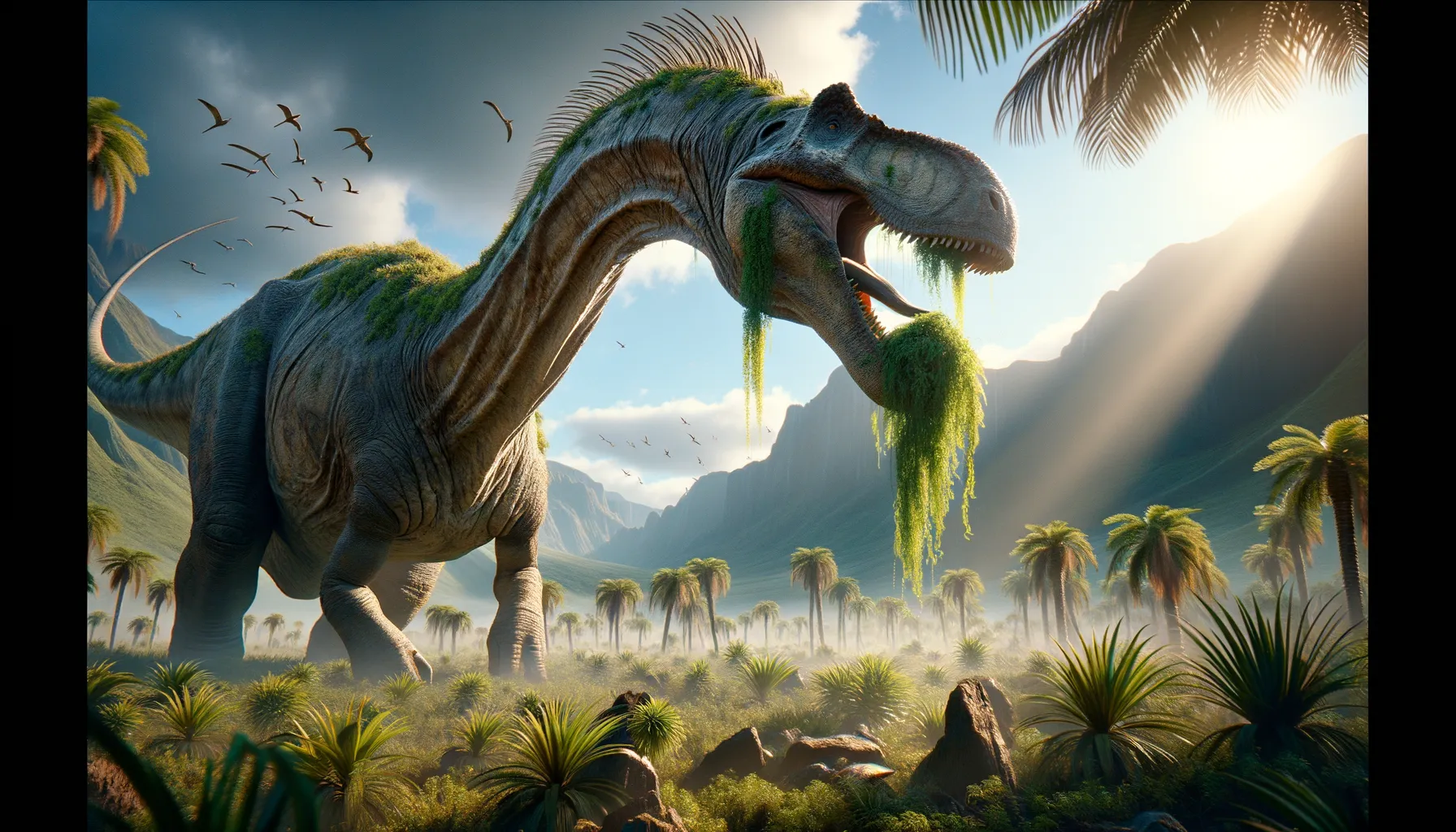
Daxiatitan
Towering giant of the ancient world.
Period
Cretaceous
Length
Estimated to be around 30 meters long.
Height
Could reach up to 10 meters tall.
Weight
Estimated to weigh up to 80 tons.
Daxiatitan was a colossal herbivorous dinosaur that roamed what is now China during the Early Cretaceous period. As one of the largest sauropods, it possessed a long neck and tail, allowing it to reach and consume vast amounts of plant matter. Its sheer size was both an asset in surviving against predators and a challenge in navigating its environment, painting a captivating picture of Cretaceous life.
Diet
Daxiatitan was herbivorous, primarily consuming large quantities of vegetation. Its long neck enabled it to reach leaves high in trees, as well as low-lying plants.
Hunting
As a herbivore, Daxiatitan didn't hunt other animals for food. However, defending itself from predators could be a formidable task due to its immense size.
Environmental challenges
Daxiatitan faced environmental pressures such as finding sufficient food to sustain its massive body. Seasonal changes in vegetation might have forced it to migrate in search of resources. Additionally, avoiding soft or unstable ground was essential to prevent getting stuck due to its weight.
Speed
Daxiatitan was likely slow-moving due to its massive size.
Lifespan
Estimated to live for several decades, similar to modern large animals.
First discovery
Discovered in 2006 in the Lanzhou Basin of China.
Fun Facts
- Daxiatitan was a gigantic herbivorous dinosaur that lived during the early Cretaceous period, around 120 million years ago.
- It is known for its massive size, with estimates suggesting it could reach lengths of up to 30 meters, making it one of the largest dinosaurs in Asia.
- Daxiatitan was a sauropod, a type of dinosaur famous for its long neck and tail, tiny head, and enormous body.
- Fossils of Daxiatitan were discovered in the Gansu province of China, providing important clues about the variety of sauropods that once roamed Asia.
- The name 'Daxiatitan' combines 'Daxia', referring to the Daxia River near the discovery site, and 'titan', indicating its giant size.
- Despite its enormous size, Daxiatitan was a plant-eater, and it likely fed on leaves and vegetation high up in trees.
- Research on Daxiatitan helps scientists understand how such massive dinosaurs lived and moved in their environments.
Growth and Development
Daxiatitan likely experienced rapid growth during its initial years to reach enormous sizes quickly. This growth enabled it to fend off predators more effectively. Continuous development would have stabilized as it reached full maturity, focusing on maintaining its substantial body mass.
Habitat
Daxiatitan inhabited lush floodplains that provided abundant plant life. These environments were critical in supporting its herbivorous diet. Access to water sources was also essential for such a large creature.
Interaction with other species
Daxiatitan coexisted with various other dinosaur species, including predators which it needed to be vigilant against. Its size likely offered some protection, discouraging attacks from smaller carnivores.
Natural lifespan
Daxiatitan's natural lifespan was likely several decades long, akin to modern large mammals.
Reproduction
Daxiatitan likely laid eggs, similar to other sauropods, with nesting sites possibly located in safe, concealed areas. Parental care might have been minimal after the eggs were laid, with juvenile dinosaurs left to fend for themselves from an early stage.
Social behaviour
Daxiatitan might have lived in groups to increase feeding efficiency and reduce predator threats. Group living could have offered social interactions that facilitated communication and protection against dangers.
Fossil locations
Fossils of Daxiatitan have been found in the Lanzhou Basin of China. This discovery has provided valuable insights into the composition and diversity of Early Cretaceous ecosystems in the region.
